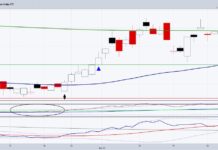The ability to compare your historical returns to an index or benchmark is an important component of investment success. This exercise allows you to judge whether your strategy is performing up to your expectations or review the effectiveness of someone else’s advice before you decide to hire them.
While this practice is commonplace throughout the industry, I often see investors making head-scratching conclusions based on biased or incomplete information.
There are two key factors that must be met when measuring the value of any investment strategy:
1. Time
2. An appropriate benchmark.
The following sections lay out my arguments for how important these concepts are to your decision process and how they help you better assess and value various investment strategies.
Time
Time is a commodity that seems to have lost much of its worth in the ever-evolving cycle of our daily lives. People are so accustomed to instant gratification through technology that they forget how long it takes to compound your wealth.
Let’s say you start saving and investing in your mid-20’s and retire in your mid-60’s. That’s 40 years of growing your wealth. However, it doesn’t stop there. You must continue to manage and conserve your investable assets for another 20 years or more until death. Just the growth phase alone is 480 months, while the distribution or income phase can last another 240 months or more. That’s a long time!
It’s also why I’m flummoxed when someone wants to compare their returns over such short periods. My portfolio hasn’t gone anywhere in three months! I’m underperforming the benchmark on a 6-month look-back! OMG, my portfolio is 200 basis points behind the S&P 500 this year, this is a catastrophe!
The reality is that even the most disciplined investment strategy is going to undergo periods of underperformance. That may persist for a few months or even a few years at a time. The important thing to do during these moment of doubt or self-loathing is review why you selected this route to begin with.
- Does the investment strategy still fit with your risk tolerance?
- Is there a temporary factor that is causing the divergence?
- Are there factors in your control that can be adjusted to improve your long-term results?
- Have you truly weighed the risks of switching paths mid-stream?
 In my opinion, you should evaluate the performance of any investment strategy on a 3-5 year time horizon. That’s generally long enough to ensure you have a few different types of markets (bull, bear, transitional, etc..) to determine the strengths and weaknesses.
In my opinion, you should evaluate the performance of any investment strategy on a 3-5 year time horizon. That’s generally long enough to ensure you have a few different types of markets (bull, bear, transitional, etc..) to determine the strengths and weaknesses.
The stock or bond markets can go a few years in a single direction. That will lend itself well to some investors and hurt others. It doesn’t mean either side is bad, just that differing risks are being exposed to each group.
Building and preserving your wealth isn’t a short-distance race. It’s a marathon, where risk factors must be carefully weighed and behavioral decisions executed with precision. You must have patience if you want to be a successful investor. It doesn’t happen overnight.
An Appropriate Benchmark
One of my biggest pet peeves in the investment business is people that want to compare apples and oranges.
Let me give you an example that hits close to home. At our firm, our flagship strategy is a mix of stocks and bonds allocated through ETFs that we adjust according to carefully constructed guidelines. There is generally anywhere from 20-40% stocks and 50-70% bonds in the Strategic Income Portfolio at any given time.
Yet, most immediate feedback we get when discussing performance is how we stack up against the S&P 500 Index. Everyone has been programmed that the S&P is the one true benchmark. It’s become a cult favorite among the index lovers of the world.
However, it’s not logical to compare the returns of a 100% stock portfolio (the S&P 500) against a multi-asset portfolio with less than half its exposure in stocks. A more appropriate benchmark for our type of strategy would be the 40/60 allocation in the iShares Core Moderate Allocation ETF (AOM). When you line up that data point, suddenly, a light bulb goes off and it starts to make a lot more sense.
You wouldn’t compare the 0-60 mph speed of a Porsche to that of a Suburban, would you? The answer of course is obvious, but you would be surprised at how often this type of assessment is made in the investment world every single day.
This is imperative to understand on a fundamental level if you are going to accurately measure risk or compare similar strategies.
- Don’t compare investing in stocks and bonds to the returns of a money market account or CD.
- Don’t relate a portfolio of closed-end funds to a basket of technology stocks.
- Don’t compare hedge fund returns to a group of ETFs.
The list goes on and on….
I think the biggest problem with making this logical connection is that most investors don’t know the appropriate benchmark for comparison purposes or where to find them. They just default to the S&P 500, the Dow Jones Industrial Average, or the NASDAQ Composite because they are on the news every night and readily accessible online.
Ultimately, each individual asset class or investment vehicle should be judged by a similar collection of peers. ETFs have made that easier over the years, but you still must do the work to find a suitable index to act as a baseline.
The Bottom Line
So much of investing is psychology and perspective measured against facts and data. It’s my hope that sharing these thoughts creates a point of view that you may not have previously considered or reinforces a preconceived notion. Either way, you will be a much stronger frame of reference the next time you analyze the performance of your portfolio.
Thanks for reading.
Twitter: @fabiancapital
Read more on Dave’s Blog.
Any opinions expressed herein are solely those of the author, and do not in any way represent the views or opinions of any other person or entity.








